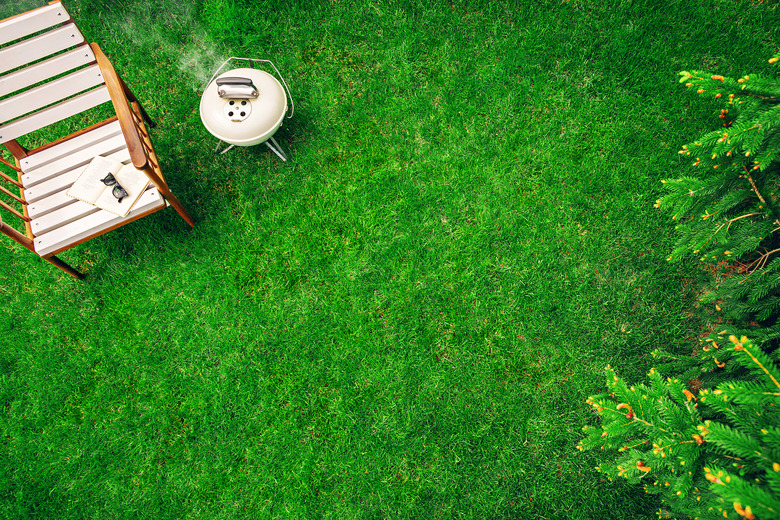Bermuda Grass And Centipede Grass
We may receive a commission on purchases made from links.
Turf species all come with pros and cons; bermudagrass (Cynodon spp.) and centipedegrass (Eremochloa ophiuroides) are no exception. These two types of turfgrasses commonly fill lawns throughout the South, but each has a long list of undesirable traits and problems. Choosing between the two may be difficult, but the choice will ultimately depend on your personal needs and the functions of your lawn.
Ideal Growing Zones for Grasses
Ideal Growing Zones for Grasses
Both bermudagrass and centipedegrass are warm-season grass species. Most types of bermudagrass and centipedegrass grow in U.S. Department of Agriculture plant hardiness zones 7 through 10, although centipedegrass grows best in USDA zones 7 and 8. Bermudagrass does not tolerate shade as well as centipedegrass and other warm-season grasses; centipedegrass may succumb to salt spray and a lack of iron in the soil.
Grass Species' Descriptions
Grass Species' Descriptions
The various bermudagrass species and hybrids range from light to dark green. Each produces a thick, vigorous lawn that grows well on multiple soil types. Its fine texture adds to the denseness and clean look.
Centipedegrass, on the other hand, is almost always apple-green, has larger blades than bermudagrass and doesn't grow in as dense.
Benefits of Each Grass Type
Benefits of Each Grass Type
Bermudagrass establishes very quickly, making it ideal for homeowners wanting a quick lawn without the wait of other species. It handles salt, wear and drought fairly well, making it a good choice for oceanfront properties and warm areas. In some areas of its growing range, bermudagrass is the preferred turf species for athletic fields and golf courses.
Centipedegrass tolerates moderate amounts of shade and, in some cases, is referred to as "lazy man's grass" because of its low maintenance requirements.
Turf Maintenance Requirements
Turf Maintenance Requirements
If a low-maintenance, rarely used turf is what you're after, centipedegrass might be your best bet. This group prefers a mowing height of 1 to 2 inches and, because it grows slowly, needs less mowing than bermudagrass. Low fertilizer requirements also serve the homeowner well; too much nitrogen — a common homeowner mistake — will cause the grass to shoot too much new growth and make it susceptible to fertilizer and other damage. Centipedegrass requires an absolute maximum of 2 pounds of nitrogen fertilizer per 1,000 square feet in mid- to late-spring each year.
Bermudagrass requires a much more frequent mowing regimen. Because bermudagrass' ideal mowing height is 3/4 inch to 1 1/2 inches and because it grows so quickly, you may need to mow between one and three times each week. This group of turf also requires more frequent fertilizer applications; apply 1/2 to 1 pound of nitrogen per 1,000 square feet three weeks after the lawn turns green and sometimes two to six times per year.
To determine how much lawn fertilizer to apply to equal 1 pound of nitrogen per 1,000 square feet, divide 1 by the first number in the fertilizer N-P-K ratio, the three-digit number listed on the bag or container. For example, the amount of a 10-10-10 fertilizer would be 1.0 divided by 0.1, which equals 10 pounds of fertilizer per 1,000 square feet.
Grass Pests and Problems
Grass Pests and Problems
Numerous pests and diseases affect these two turfgrasses. In particular, both easily succumb to fungal diseases such as brown patch and dollar spot. Nematodes are among the most serious pests of each group, but ground pearls, caterpillars, grubs, web worms and mole crickets also attack. Weeds establish and out-compete newly planted centipedegrass because of its slow growth rate, but bermudagrass' quick growth rate allows it to outgrow weeds and prevent infestations. Improper fertilization is a major cause for pest and fungal problems in both groups.
